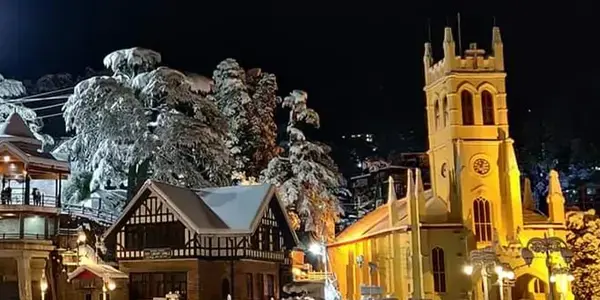

.webp)
Viceregal Lodge Shimla was constructed between 1880 and 1888 as the summer residence of British Viceroys in India. Designed by Henry Irwin, the Tudor‑Gothic mansion was built using local gray sandstone and oak interiors. It included modern features of the time, such as electric lighting powered by an onsite steam generator. During the 1930–31 Round Table Conferences, crucial discussions on India’s constitutional future took place within its grand halls. After independence, the building became the President’s summer retreat, noted as Rashtrapati Niwas, until 1965 when Dr. Radhakrishnan converted it into the Indian Institute of Advanced Study. The lodge, originally spread ...
.webp)
Packages Of Shimla
Classic hill-station charm with scenic views and cosy stays.

Places To Visit In Shimla
Top places to visit in Shimla, beautifully curated.
.webp)
Images Of Shimla
Discover Shimla’s colonial charm, hills and nature through images
Packages Of Shimla
Places To Visit In Shimla
Images Of Shimla
Entry fee ~₹20 (Indians) / ₹50 (foreigners); camera ~₹100
Guided tours at 11 AM & 3 PM—booking recommended
Wear good walking shoes—garden paths can be uneven
Cafeteria offers Himachali snacks (aloo-gutke, chawal gosht)
Best lighting for photography: late afternoon
Wildlife: peacocks and squirrels roam freely (no feeding)
Check current exhibitions in the library wing
View small rainwater harvesting tanks under lawns
Popular Foods Nearby:
Himachali aloo–gutke and spicy chha gosht at the onsite café
Masala chai and walnut biscuits from stalls by the entrance
April–June (garden bloom)
Viceregal Lodge Shimla was constructed between 1880 and 1888 as the summer residence of British Viceroys in India. Designed by Henry Irwin, the Tudor‑Gothic mansion was built using local gray sandstone and oak interiors. It included modern features of the time, such as electric lighting powered by an onsite steam generator. During the 1930–31 Round Table Conferences, crucial discussions on India’s constitutional future took place within its grand halls. After independence, the building became the President’s summer retreat, noted as Rashtrapati Niwas, until 1965 when Dr. Radhakrishnan converted it into the Indian Institute of Advanced Study. The lodge, originally spread over 331 acres, now retains over 110 acres including terraced gardens and themed pathways. Visitors today can explore the wood‑paneled drawing rooms, extensive botanical lawns, and a historic library collection of over 40,000 books. The Deer and peacock inhabitants add charm at dusk as light filters through Gothic windows. From grand political dialogues to literary scholarship, this estate embodies British-era grandeur and modern academic vitality.
Built 1880–88 by Henry Irwin in Tudor‑Gothic design
Hosted 1930–31 Round Table Conferences
Became IIAS in 1965; houses over 40,000 rare books
Originally 331 acres of estate, now 110
Among Shimla’s earliest electrified buildings
Hilly terrain is a dynamic landscape characterized by rolling or steep slopes, varying elevations, and a mix of hills, ridges, valleys, and plateaus. These features are the result of geological processes such as tectonic movements, erosion, and weathering over time.